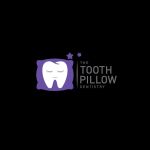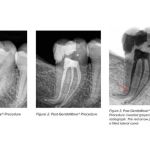How to Get a Brighter Smile
- 1. Understanding a Healthy Smile
- 2. Common Causes of Tooth Discoloration
- 3. Top Methods for Getting a Brighter Smile
- 4. Natural Home Remedies for a Brighter Smile
- 5. Tips for Maintaining Your Brighter Smile
- 6. Conclusion and Next Steps
1. Understanding a Healthy Smile
A bright, healthy smile can boost your confidence and make you feel more attractive. It’s often the first thing people notice about you, and having a bright smile can leave a lasting positive impression. But a truly healthy smile goes beyond just looking good—it’s also about the well-being of your teeth and gums. A bright smile often means your teeth are strong, your gums are healthy, and your oral hygiene routine is on point.
Achieving a brighter smile is about more than just teeth whitening—it involves taking care of your oral health. Regular brushing, flossing, and visits to the dentist are all essential practices for maintaining a smile that shines. In this article, we will discuss not only how to get a brighter smile but also how to maintain it in the long run.
2. Common Causes of Tooth Discoloration
Before diving into how to achieve a brighter smile, it’s essential to understand what causes tooth discoloration. Many factors contribute to stained or yellowed teeth. Here are some of the most common causes:
1. Food and Beverages
Certain foods and drinks can stain your teeth. Beverages like coffee, tea, red wine, and soda are notorious for causing stains. Foods such as curry, soy sauce, and berries can also contribute to tooth discoloration. These substances contain pigments that can adhere to your enamel and cause it to darken over time.
2. Smoking and Tobacco Use
Smoking and the use of tobacco products are some of the leading causes of tooth discoloration. Nicotine and tar from cigarettes and smokeless tobacco can create stubborn yellow and brown stains on your teeth that can be difficult to remove.
3. Poor Oral Hygiene
Inadequate brushing and flossing can lead to plaque and tartar buildup, which can make your teeth look yellow and dull. Neglecting oral hygiene also allows bacteria to thrive, which can contribute to discoloration and even lead to more severe dental issues.
4. Age
As you age, the enamel on your teeth naturally wears down, making the underlying yellowish dentin more visible. This results in a gradual change in the color of your teeth, often leading to a duller, less vibrant smile.
5. Medications
Certain medications, such as antihistamines, blood pressure medications, and antibiotics, can also cause staining or discoloration of your teeth. Some medications may affect the color of your enamel, while others may cause staining over time.
3. Top Methods for Getting a Brighter Smile
Now that we know what causes tooth discoloration, let’s explore the top methods for achieving a brighter smile. These options range from professional treatments to home remedies, so you can choose the one that fits your needs and lifestyle.
1. Professional Teeth Whitening
The most effective way to achieve a brighter smile is through professional teeth whitening treatments. Dentists offer whitening procedures that can remove deep stains and significantly lighten the color of your teeth. These treatments use stronger bleaching agents than over-the-counter products, providing faster and more dramatic results.
One popular option is in-office whitening, where a dentist applies a whitening gel to your teeth and activates it with a special light. The process usually takes about an hour and can make your teeth several shades lighter in just one session.
2. At-Home Whitening Products
If you’re looking for a more affordable or convenient option, at-home whitening kits are a great alternative. Many of these kits come with whitening trays or strips that are easy to apply. These products contain a lower concentration of bleach compared to professional treatments, so the results may take longer to appear, but they can still effectively brighten your smile over time.
3. Natural Whitening Remedies
For those who prefer natural alternatives, there are several home remedies you can try. Baking soda, for instance, is a mildly abrasive substance that can help scrub away surface stains when used as a toothpaste. Activated charcoal is another popular remedy that may help absorb stains and toxins from your teeth.
Another popular remedy is oil pulling, a traditional practice that involves swishing coconut oil around your mouth. Some people claim it helps remove bacteria and whiten teeth naturally, though scientific evidence on its effectiveness is limited.
4. Natural Home Remedies for a Brighter Smile
For those who prefer more natural or holistic approaches, there are several home remedies that may help whiten your teeth without harsh chemicals. Here are a few simple methods:
1. Baking Soda
Baking soda is an effective and natural teeth-whitening agent. It works by gently scrubbing away surface stains, leaving your teeth looking whiter. You can make your own baking soda toothpaste by mixing it with a little water and brushing your teeth with it a few times a week.
2. Apple Cider Vinegar
Apple cider vinegar has natural whitening properties due to its acidic nature. You can dilute it with water and use it as a mouthwash to help remove surface stains. However, be careful not to use it too often, as the acidity can wear down your enamel over time.
3. Strawberries and Baking Soda
Strawberries contain malic acid, which can help break down surface stains on teeth. You can mash a fresh strawberry and mix it with baking soda to create a natural paste that can help whiten your teeth. Brush with this mixture once or twice a week for the best results.
5. Tips for Maintaining Your Brighter Smile
Once you’ve achieved a brighter smile, it’s essential to maintain it. Here are some tips to keep your teeth looking their best:
1. Brush and Floss Regularly
The foundation of any bright smile is good oral hygiene. Brush your teeth at least twice a day with fluoride toothpaste and floss daily to remove plaque and prevent staining.
2. Avoid Staining Foods and Drinks
After whitening your teeth, try to avoid foods and drinks that can stain your teeth, such as coffee, tea, red wine, and berries. If you do indulge, make sure to brush your teeth afterward to minimize staining.
3. Regular Dental Checkups
Regular visits to the dentist for cleanings and checkups are key to maintaining a bright smile. A professional cleaning removes built-up plaque and tartar, which can dull your teeth over time.
6. Conclusion and Next Steps
A brighter smile is within reach, whether you opt for professional whitening, at-home treatments, or natural remedies. By following the right techniques and maintaining good oral hygiene, you can enjoy a smile that is not only whiter but also healthier.
If you’re looking for effective teeth-whitening products or more personalized advice, visit Dentistry Toothtruth to explore the best options available for brightening your smile.







 All Smiles By Design4.0 (549 review)
All Smiles By Design4.0 (549 review) The Tooth Pillow Dentistry0.0 (0 review)
The Tooth Pillow Dentistry0.0 (0 review) Bauman Endodontics Richard Bauman DMD4.0 (197 review)
Bauman Endodontics Richard Bauman DMD4.0 (197 review) Dental Associates of Delaware-Hockessin4.0 (247 review)
Dental Associates of Delaware-Hockessin4.0 (247 review) Saluté Dental - Woodbury5.0 (1513 review)
Saluté Dental - Woodbury5.0 (1513 review) Affordable Dentures & Implants4.0 (502 review)
Affordable Dentures & Implants4.0 (502 review) The Importance of Oral Health Education During Pregnancy for a Healthy Pregnancy
The Importance of Oral Health Education During Pregnancy for a Healthy Pregnancy Best Tips for Brushing Your Teeth Properly for Healthy Gums: Essential Techniques for Oral Health
Best Tips for Brushing Your Teeth Properly for Healthy Gums: Essential Techniques for Oral Health Why Skipping Dental Checkups Can Lead to Bigger Oral Health Problems
Why Skipping Dental Checkups Can Lead to Bigger Oral Health Problems Advantages of Porcelain Dental Restorations
Advantages of Porcelain Dental Restorations How Can Diabetes Cause Tooth and Gum Problems? Preventing and Managing Oral Health Issues
How Can Diabetes Cause Tooth and Gum Problems? Preventing and Managing Oral Health Issues Healthy Habits for Promoting Good Oral Health and Hygiene: Tips for a Healthy Smile
Healthy Habits for Promoting Good Oral Health and Hygiene: Tips for a Healthy Smile